Long duration M2.1 solar flare erupts from Region 2415, CME produced
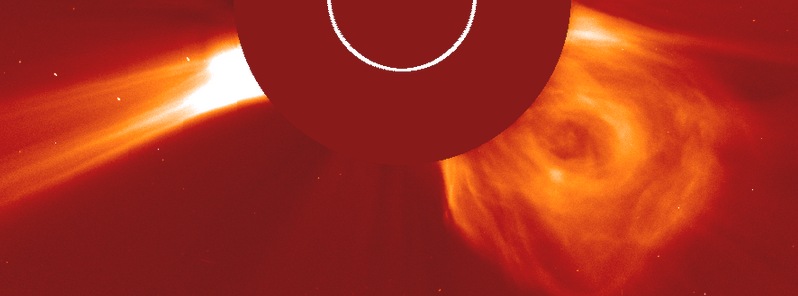
A long duration solar flare measuring M2.1 at its peak time erupted from Region 2415 at 18:03 UTC on September 20, 2015. The event started at 17:32 and ended at 18:29 UTC.
A Type II Radio Emission with estimated velocity of 1358 km/s was produced by this event. Type II emissions occur in association with eruptions on the Sun and typically indicate a Coronal Mass Ejection is associated with a flare event.
Additionally, a 10cm Radio Burst (lasting 23 minutes and with peak flux 320 sfu) was also associated with the event. A 10cm radio burst indicates that the electromagnetic burst associated with a solar flare at the 10cm wavelength was double or greater than the initial 10cm radio background. This can be indicative of significant radio noise in association with a solar flare. This noise is generally short-lived but can cause interference for sensitive receivers including radar, GPS, and satellite communications.
SOHO LASCO C2 coronagraph imagery shows the newly produced CME leaving the Sun. It is possible that there is an Earth directed component.
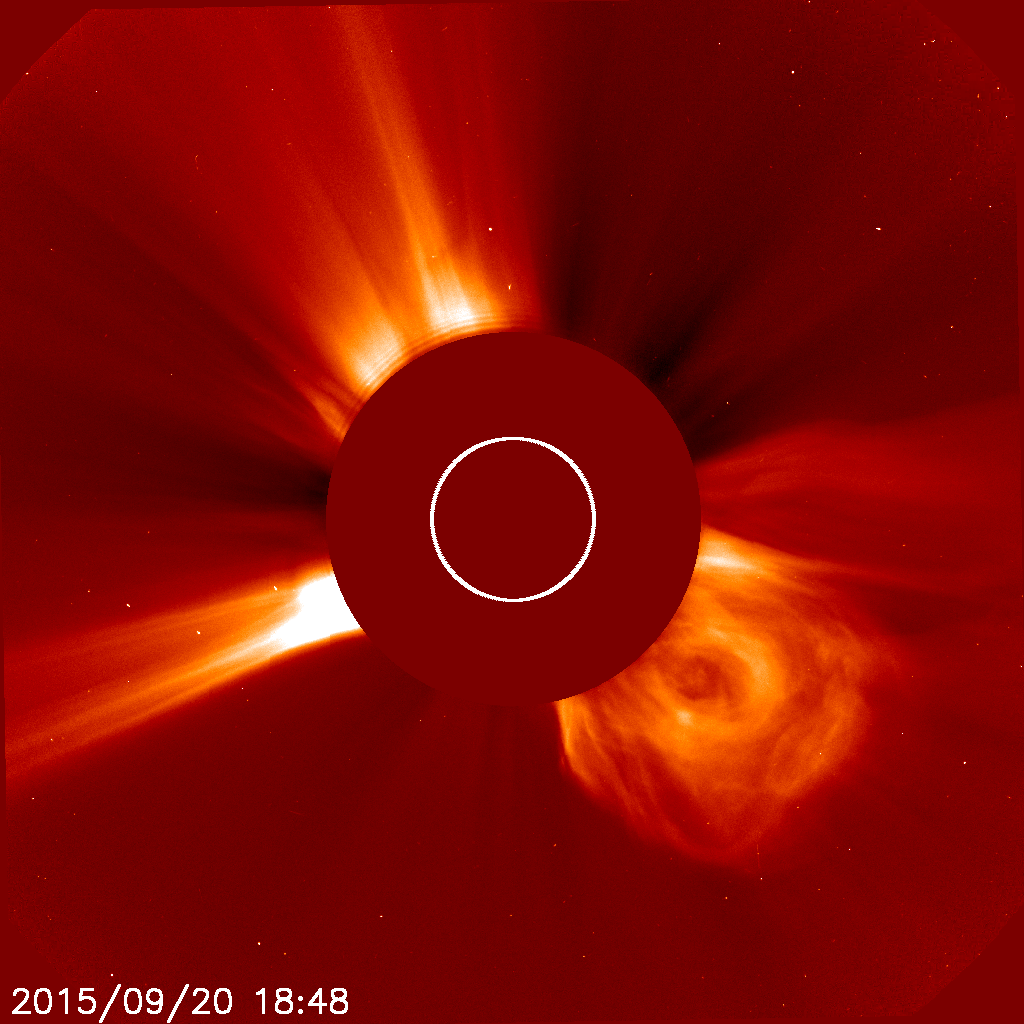
SOHO LASCO C2 coronagraph. Credit: ESA/NASA.
Update, September 21:
The CME produced by the M2.1 event on September 20 is "a combination of a slower CME to the north (appears to be a limb event in SDO/AIA 171 imagery) with the much faster (est. speed 825 km/s) CME associated with the M2 flare just to its south. WSA/ENLIL modeling of the event showed the bulk of the ejecta to the SW of the Sun-Earth line. However, a rise in the lower energy protons in the ACE/EPAM instrument suggests a possible shock enhancement by late September 22 to early September 23." (SWPC, Forecast Discussion issued 12:30 UTC on September 22)
*** end of update ***
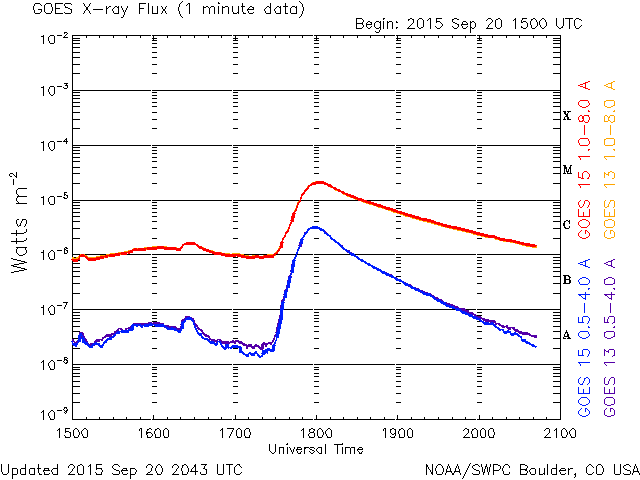
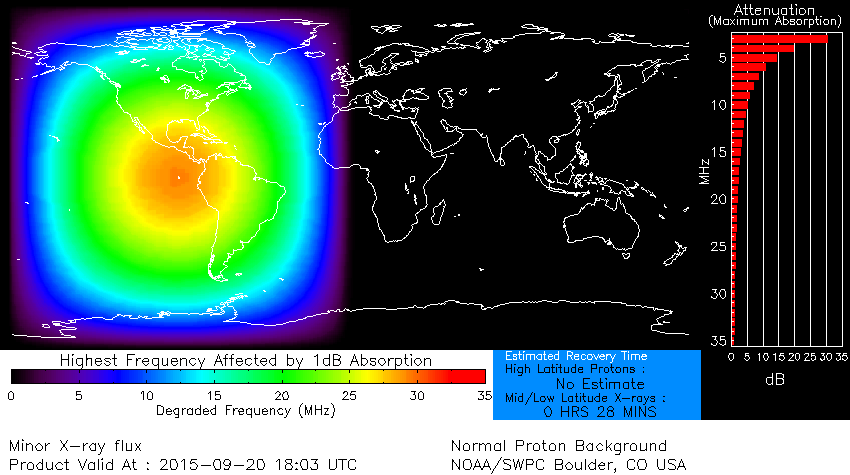
Global D-Region Absorption Prediction (D-RAP) at the peak of M2.1 solar flare on September 20, 2015.
Proton flux is on the rise following the M2.1 solar flare:
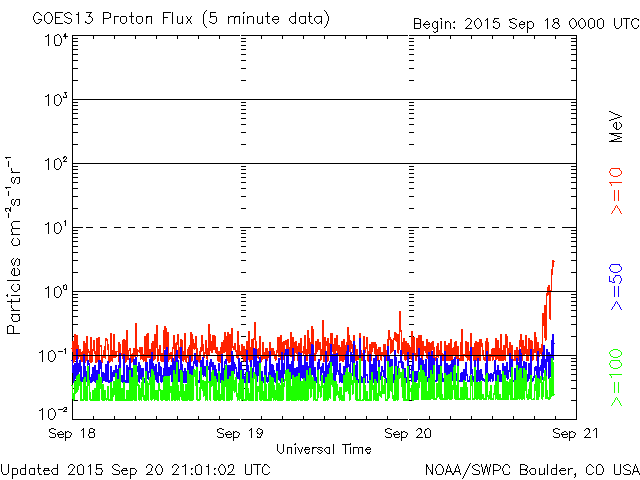
Space Weather Message Code: SUM10R
Serial Number: 669
Issue Time: 2015 Sep 20 1843 UTC
SUMMARY: 10cm Radio Burst
Begin Time: 2015 Sep 20 1754 UTC
Maximum Time: 2015 Sep 20 1804 UTC
End Time: 2015 Sep 20 1817 UTC
Duration: 23 minutes
Peak Flux: 320 sfu
Latest Penticton Noon Flux: 110 sfu
NOAA Space Weather Scale descriptions can be found at
www.swpc.noaa.gov/noaa-scales-explanation
Description: A 10cm radio burst indicates that the electromagnetic burst associated with a solar flare at the 10cm wavelength was double or greater than the initial 10cm radio background. This can be indicative of significant radio noise in association with a solar flare. This noise is generally short-lived but can cause interference for sensitive receivers including radar, GPS, and satellite communications.
***
Space Weather Message Code: ALTTP2
Serial Number: 1024
Issue Time: 2015 Sep 20 1842 UTC
ALERT: Type II Radio Emission
Begin Time: 2015 Sep 20 1817 UTC
Estimated Velocity: 1358 km/s
NOAA Space Weather Scale descriptions can be found at
www.swpc.noaa.gov/noaa-scales-explanation
Description: Type II emissions occur in association with eruptions on the sun and typically indicate a coronal mass ejection is associated with a flare event.
***
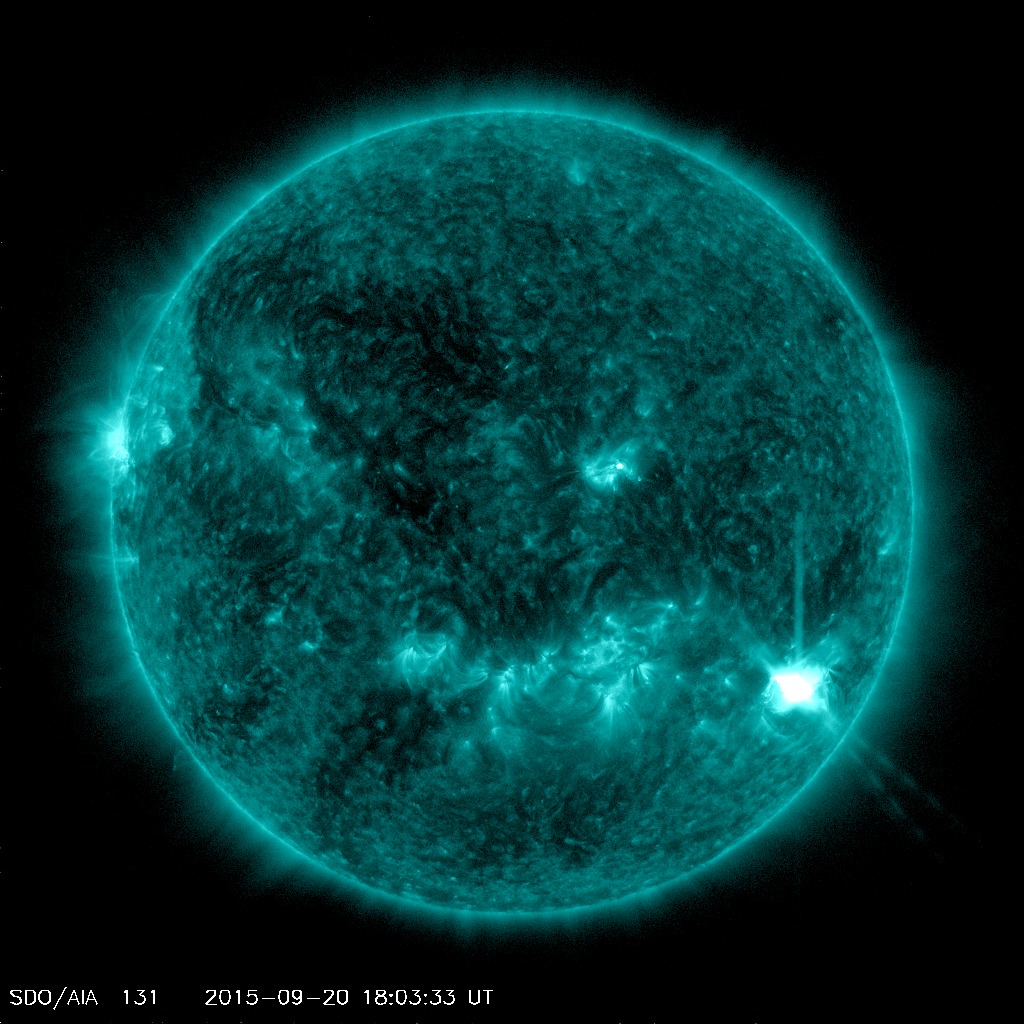
M2.1 solar flare at 18:03 UTC on September 20, 2015. Image credit: NASA SDO/AIA 131.
This was the second M-class solar flare event of the day. The first one was M1.5 produced by the newly numbered Region 2420. That event started at 04:55, peaked at 05:03 and ended at 05:17 UTC.
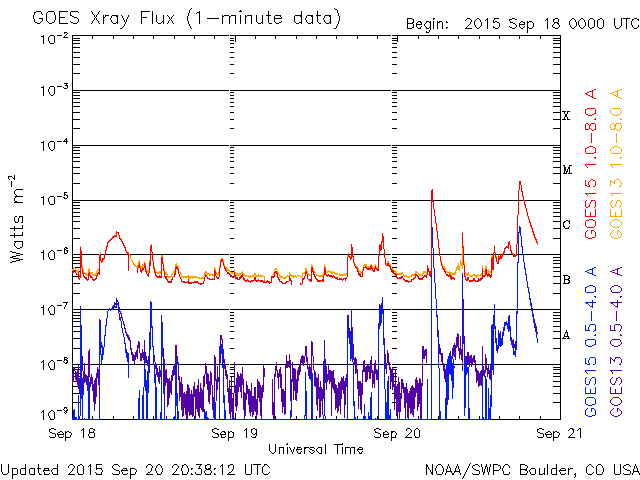
There were no radio signatures associated with the M1.5 event that would suggest a CME was produced.
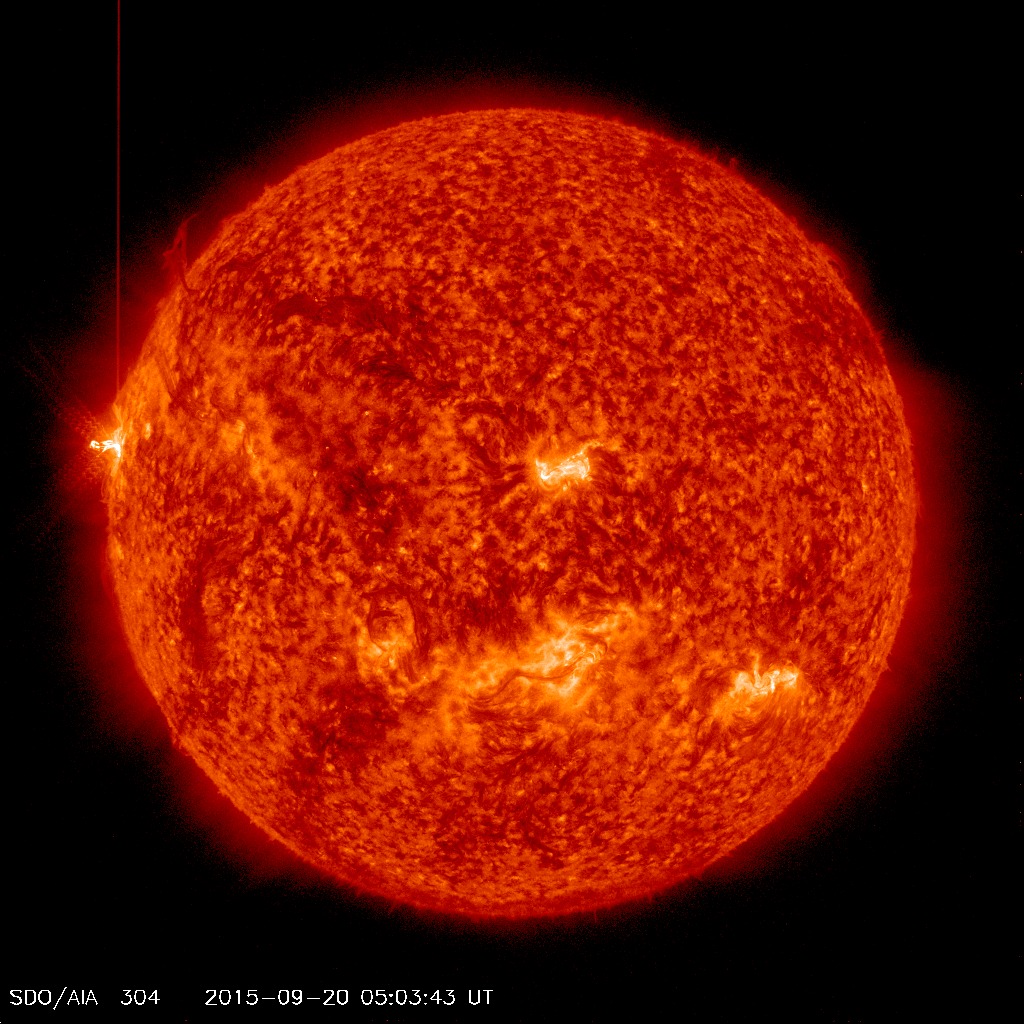
M1.5 solar flare at 05:03 on September 20, 2015. Image credit: NASA SDO/AIA 304.
There are currently 4 numbered sunspot regions on the Earth side of the Sun.
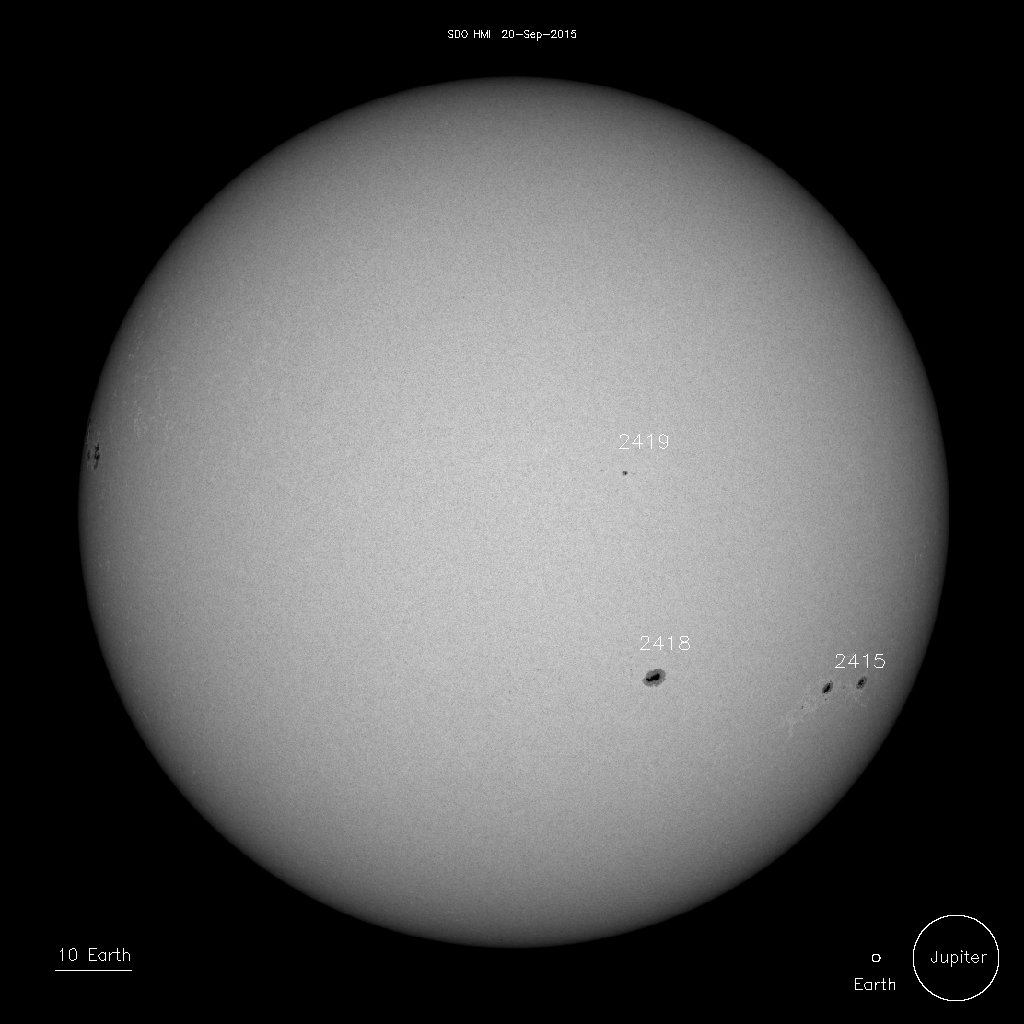
Sunspots on September 20, 2015. Image credit: NASA SDO/HMI.
2415 – Beta-Gamma
2418 – Beta
2419 – Beta
Emerging: 2420 – (uncertain)
A CME, produced by the September 18th C-class solar flare, reached our planet at 06:05 UTC on September 20, a full day before it was expected. The geomagnetic field responded with a period of G3 Strong geomagnetic storming.
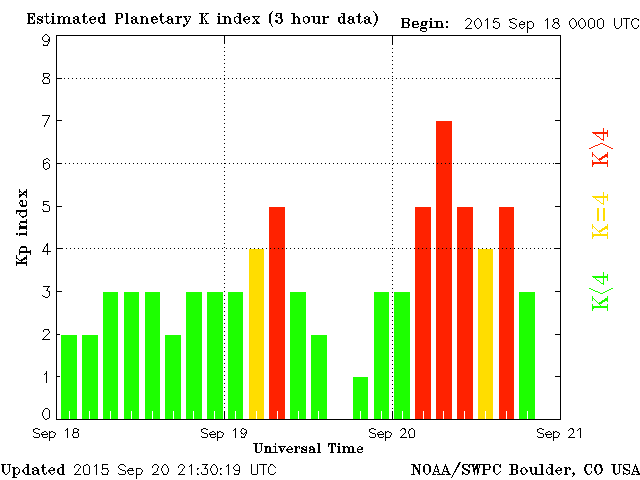 The geomagnetic field is expected to slowly recover through early Monday, September 21 as CME effects diminish. However, this should give way to a geoeffective Coronal Hole High Speed Stream (CH HSS) causing unsettled to active periods through the majority of September 21 and 22.
The geomagnetic field is expected to slowly recover through early Monday, September 21 as CME effects diminish. However, this should give way to a geoeffective Coronal Hole High Speed Stream (CH HSS) causing unsettled to active periods through the majority of September 21 and 22.
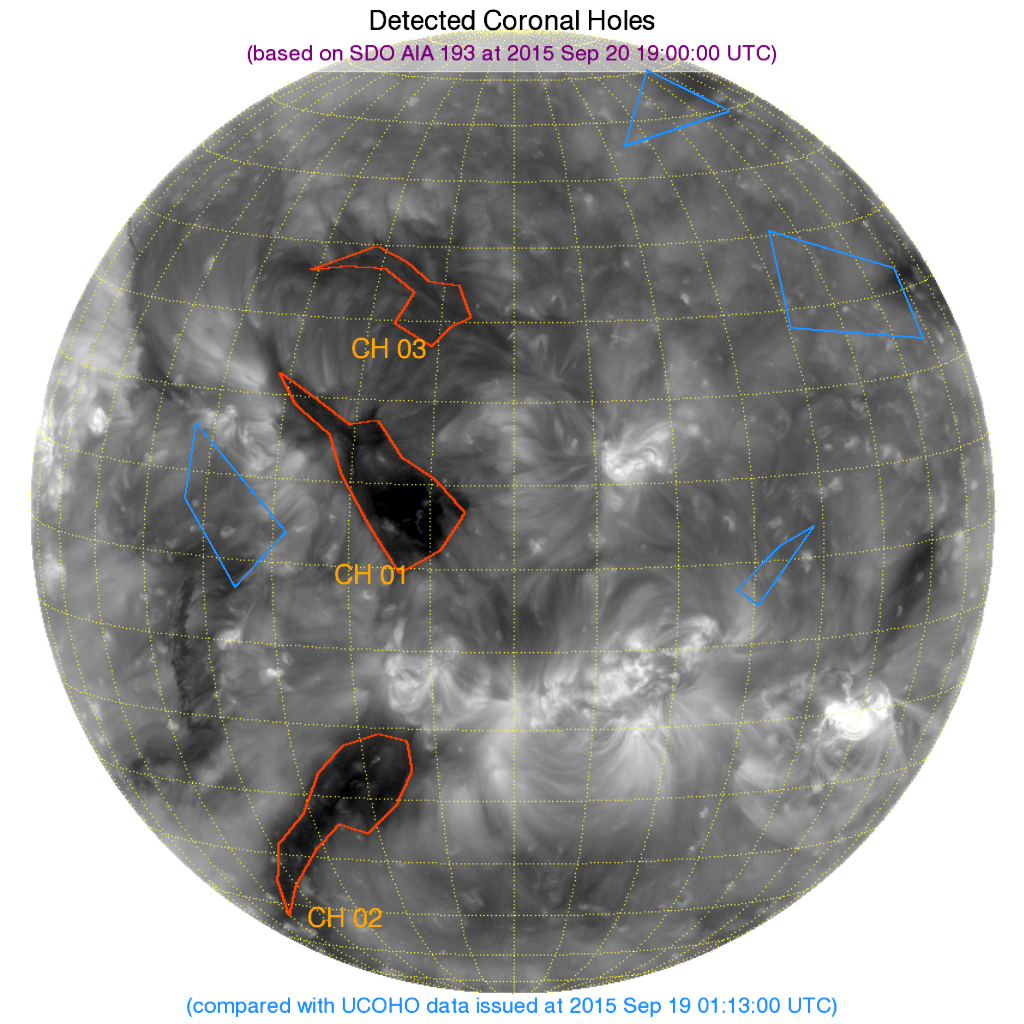
Featured image: CME produced by the M2.1 solar flare on September 20, 2015. Credit: ESA/NASA SOHO/LASCO C2.

Commenting rules and guidelines
We value the thoughts and opinions of our readers and welcome healthy discussions on our website. In order to maintain a respectful and positive community, we ask that all commenters follow these rules.